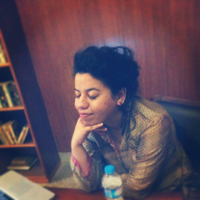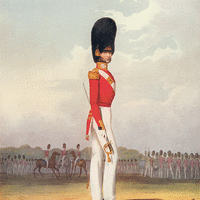More about Sistine Chapel
- All
- Info
- Shop

Contributor
And in this week’s edition of Cribs, we’ll be checking out the dopest of religious abodes aka the Pope’s main hang aka the Sistine Chapel. Sup, Vatican City.
Around the late 15th century when the papacy starting trending again, Rome wasn’t just the major religious center, it became the hub of artistic growth. The papacy was all about building stuff that made the olden pagan past of Rome look mad weak. Peeps like Leon Battista Alberti, Piero Della Francesca, Masaccio, and Botticelli were summoned to pimp up the city (I’ll drop the slang now before I embarrass myself further).
During this same time period, the Sistine Chapel, (named after Pope Sixtus IV della Rovere i.e. the guy who commissioned the project) was completed and in that same vein to add new adornments to religious Rome, Pope Sixtus IV commissioned a cycle of frescoes for the walls of the chapel. He asked that scenes from the life of Moses and Christ be shown on each wall, thereby embodying the Hebrew Bible and the New Testament. Most notable among the guys asked to paint this cycle of frescoes were Perugino (made The Delivery of the Keys) and Botticelli.
In 1508, came an embittered Michelangelo, hired against his will as a painter not a sculptor by Pope Julius II. The ceiling was originally painted blue with gold stars to represent the heavens, obvs, but along came Michelangelo who proceeded to change to face of fresco painting. Scenes of Creation all the way up to the Fall cover the ceiling in the form of muscly people enacting these narratives (even the women look as built as the guys, but with D-cups). This was a tough project for Michelangelo, who had to build special scaffoldings to be able to work properly and then of course, the mapping of perspective in this spectrum of visuals played out by more than 300 human figures can’t be a walk in the park, either. Years later, in 1989, a whopping 12-year project took up the cleaning and restoration of the Sistine Ceiling!
But this is more than just the location of salient artworks. Let’s not forget, this is where the papal conclave takes place. So while the clergy gets together to pick out the next Pope, Michelangelo’s robust nudes enact the history of the human race above them and Perugino’s Christ hands over the keys to St. John, the first ever pope. Feel free to be struck dumb by symbolic reverie as you stand in this holy crib.
Featured Content
Here is what Wikipedia says about Sistine Chapel
The Sistine Chapel (/ˈsɪstiːn/ SIST-een; Latin: Sacellum Sixtinum; Italian: Cappella Sistina [kapˈpɛlla siˈstiːna]) is a chapel in the Apostolic Palace, the pope's official residence in Vatican City. Originally known as the Cappella Magna ('Great Chapel'), it takes its name from Pope Sixtus IV, who had it built between 1473 and 1481. Since that time, it has served as a place of both religious and functionary papal activity. Today, it is the site of the papal conclave, the process by which a new pope is selected. The chapel's fame lies mainly in the frescoes that decorate its interior, most particularly the Sistine Chapel ceiling and The Last Judgment, both by Michelangelo.
During the reign of Sixtus IV, a team of Renaissance painters including Sandro Botticelli, Pietro Perugino, Pinturicchio, Domenico Ghirlandaio and Cosimo Rosselli, created a series of frescos depicting the Life of Moses and the Life of Christ, offset by papal portraits above and trompe-l'œil drapery below. They were completed in 1482, and on 15 August 1483 Sixtus IV celebrated the first mass in the Sistine Chapel for the Feast of the Assumption, during which the chapel was consecrated and dedicated to the Virgin Mary.
Between 1508 and 1512, under the patronage of Pope Julius II, Michelangelo painted the chapel's ceiling, a project that changed the course of Western art and is regarded as one of the major artistic accomplishments of human civilization. In a different political climate, after the Sack of Rome, he returned and, between 1535 and 1541, painted The Last Judgment for Popes Clement VII and Paul III. The fame of Michelangelo's paintings has drawn multitudes of visitors to the chapel since they were revealed five centuries ago.
Check out the full Wikipedia article about Sistine Chapel



















Michelangelo Buonarroti was a painter, sculptor, architect, and poet who widely considered one of the most brilliant artists of the Italian Renaissance. His artistic style was renowned mainly for his sculptures. His abilities as a painter and sculptor were unsurpassed in his day. While many artists studied under him and assisted him with the painting of the Sistine Chapel in the Vatican, none equaled him as an artist. His use of bright and lyrical colors in his paintings was much more imaginative than had previously been thought. In the entire ceiling of Sistine Chapel, most of the architectural formations (cornices, entablatures, partitions) is actually illusionistic painting. Even though it was illusionistic architecture, the illusion he created was different from the type of illusion that Raphael or Mantegna did in their frescoes. In the works of both of those artists, the painting on the wall became a stage or window opening onto another scene. Michelangelo treated each scene in his ceiling as a separate painting, the way Giotto did. As a result, the illusion effect of architecture is limited to the architectural framework but does not extend to the actual scenes of genesis painted in the ceiling. Each scene has its own perspective and independent space. This more effectively creates the sense that they are taking place in another realm or sphere, one which is above the viewer and on another plane of existence. Also, the arrangement of the scenes of genesis is chronological, alternating in terms of size of the scenes, large and small, in a regular and rhythmic pattern. The structure is true to Renaissance beliefs about the shape of Christian history, that it did and would continue to unfold in an ordered sequence of events, following a divine plan. The only deviation is that most of the scenes can be read as more than one event, giving Michelangelo's creation a quality which is similar to that of Leonardo's Last Supper: the sense of time unfolding in a continuous and dream-like reality as opposed to a linear, minute-by-minute narrative.